Attendance letter to parents template
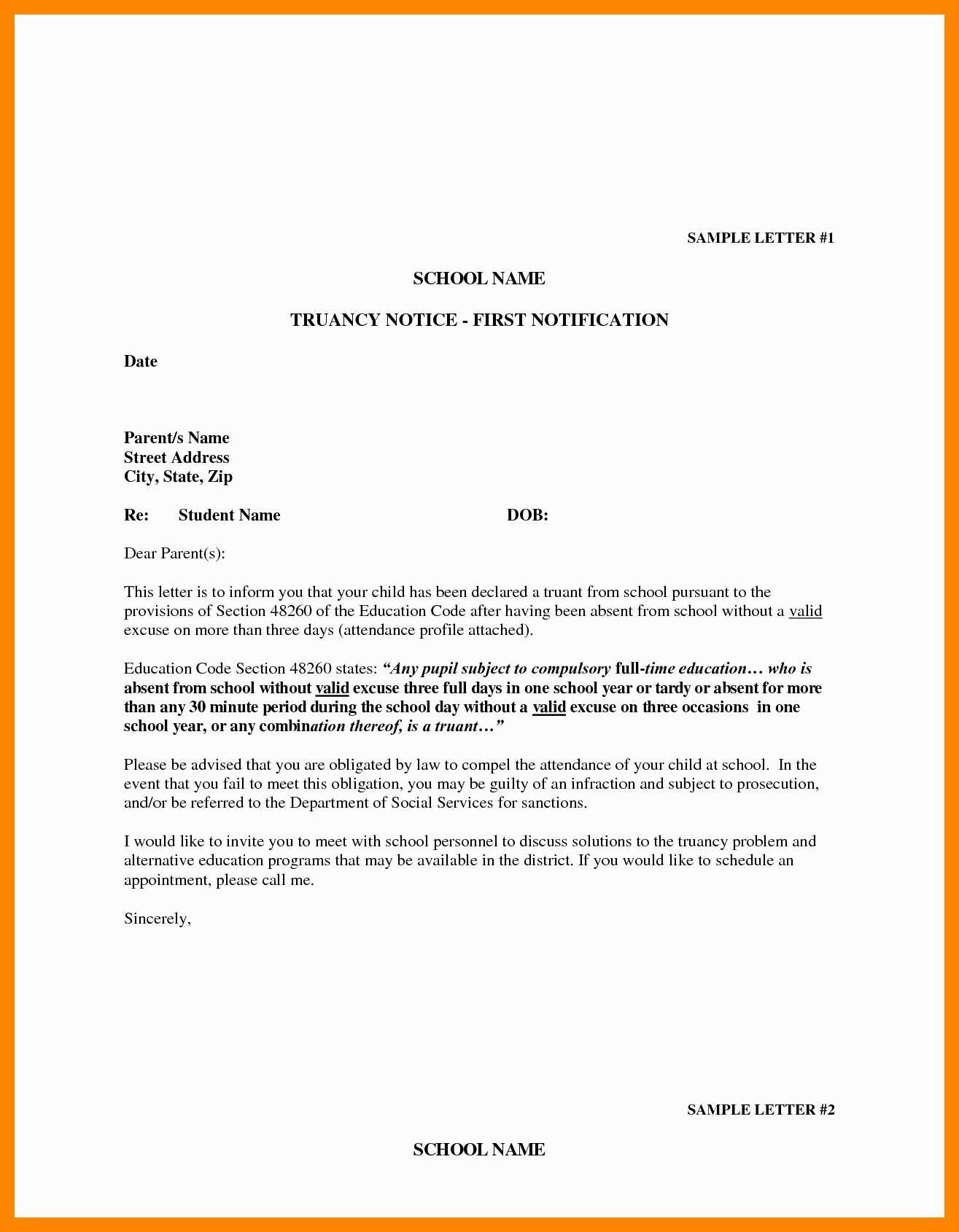
To address attendance concerns effectively, a clear and direct letter to parents is a practical solution. This template provides a framework to communicate attendance issues, ensuring the message is both polite and constructive. Use it to express the importance of student presence while remaining empathetic and solution-oriented.
When drafting the letter, begin with a friendly greeting and introduce the reason for writing. Clearly state the student’s name, grade, and specific attendance issues. It is helpful to mention dates and any patterns you may have noticed, which gives the parent a concrete understanding of the situation.
Offer suggestions or solutions for improving attendance. This might include offering support, discussing potential barriers, or suggesting strategies to help the student attend school regularly. Remember to keep the tone respectful and open, making sure the letter reflects a collaborative effort to support the student.
Conclude the letter by inviting the parent to discuss the issue further. This allows for an open line of communication and shows that you value their input. Reinforce your commitment to the student’s success and your willingness to work together for their benefit.
Attendance Letter to Parents Template
A well-structured attendance letter helps parents stay informed about their child’s attendance status. Use this template to address concerns and highlight important details regarding their child’s presence or absence.
Template
Dear [Parent’s Name],
This letter is to inform you about the attendance of your child, [Student’s Name], at [School Name]. According to our records, [Student’s Name] has been absent on the following dates: [list dates]. We kindly ask you to provide an explanation or any supporting documentation for these absences.
If the absence was due to illness or another valid reason, please notify us at your earliest convenience. If no reason is provided, we will consider these absences as unexcused. Maintaining regular attendance is important for academic progress, and we want to ensure your child remains on track.
Feel free to contact us if you have any questions or concerns regarding your child’s attendance. We appreciate your cooperation.
Sincerely,
[Your Name]
[Your Title]
[School Name]
[Contact Information]
Follow-Up Actions
In case there are ongoing attendance issues, consider offering additional support such as meetings with the school counselor or academic accommodations. Keeping open communication with parents ensures better understanding and solutions for student success.
Creating a Professional Greeting in Your Letter
Address the parents respectfully and clearly. Start with a formal salutation such as “Dear [Parent’s Name]” or “Dear [Parent’s Last Name] Family.” If you’re addressing multiple parents, use a phrase like “Dear Parents” or “Dear Guardian(s).” Keep the tone polite, but not overly formal, so it feels approachable. The greeting sets the tone for the entire letter, so use words that convey respect and professionalism without being stiff.
Be Specific in Your Salutation
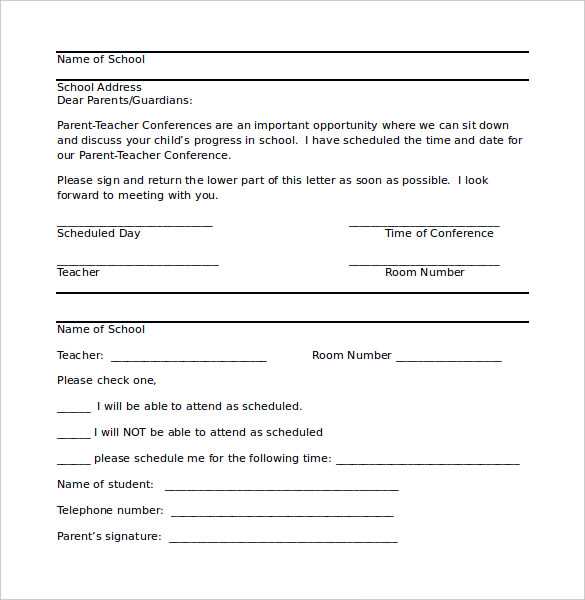
If possible, include the parent’s name to make the letter feel more personalized. Using “Dear Mr. and Mrs. Smith” is more engaging than a generic “Dear Parent(s).” Personalization shows that you value the recipient’s time and attention.
Avoid Overly Casual Greetings
While it’s important to maintain warmth, steer clear of informal greetings like “Hey” or “Hello.” These can make the letter feel too casual for a communication that addresses important school matters. Stick with formal alternatives to maintain a professional tone.
How to Address Attendance Concerns Clearly
Use clear and direct language when addressing attendance issues. Start by specifying the exact dates and instances of absences. This ensures the issue is understood without ambiguity.
- State the number of missed school days and how it impacts academic progress.
- Provide any relevant school policies about attendance to give context to the discussion.
- Offer possible solutions or steps to resolve the attendance issue, such as scheduling a meeting or providing resources for make-up work.
Be honest about the consequences of continued absenteeism. Avoid threats, but make it clear that attendance is directly linked to academic success and school community involvement.
- Explain how absenteeism affects group work, participation, and overall learning.
- Clarify any policies regarding missed assignments, exams, or participation grades.
Lastly, ask for feedback from the parents on any underlying issues or support that might help improve the situation. Ensure they know you’re open to a solution-focused conversation.
Providing Relevant Dates and Details of Absence
Be specific when mentioning the dates of absence. Include the exact dates the student was absent and, if possible, the reason for the absence. This helps parents understand the exact timeframe in question.
Example of Absence Details
Below is an example of how to present the dates and details clearly:
| Student Name | Absence Dates | Reason for Absence |
|---|---|---|
| John Doe | January 10 – January 12, 2025 | Medical Leave |
| Jane Smith | January 15, 2025 | Family Emergency |
Providing such details allows for transparency and better communication with parents. If the absence is part of a longer pattern, consider mentioning this as well.
Offering Solutions and Support for Improvement
Provide clear expectations regarding attendance. Encourage consistent communication between parents and school. If challenges arise, recommend setting up regular check-ins to address concerns early.
Developing a Personalized Plan
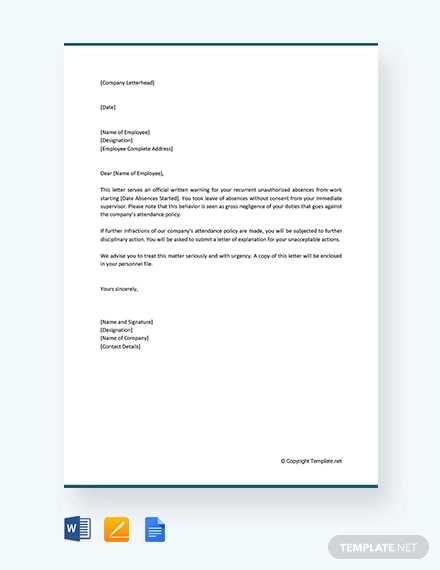
Collaborate with parents to create a tailored approach for their child’s improvement. Discuss strategies such as adjusting schedules, setting academic goals, or involving additional support like tutoring or counseling. A plan that aligns with the child’s needs will improve their engagement and performance.
Encouraging Positive Reinforcement
Recognize and celebrate progress, no matter how small. Offer praise for consistent attendance or improved performance, fostering motivation and confidence. Positive reinforcement helps reinforce desired behavior and makes the child feel supported in their efforts.
Including School Policies on Attendance
Clearly communicate the school’s attendance policies in the letter. Highlight the importance of punctuality and regular attendance for student success. This ensures that parents understand their responsibility in maintaining their child’s attendance record.
Key Policies to Include
- Excused Absences: Specify which reasons are acceptable for excused absences, such as illness or family emergencies.
- Unexcused Absences: Detail what constitutes unexcused absences and the consequences associated with them.
- Late Arrivals: Explain the procedure for late arrivals, including how tardiness affects academic performance and the school’s policy on reporting late arrivals.
- Make-up Work: Outline the process for making up missed assignments and tests due to absences, including deadlines and teacher responsibilities.
- Reporting Absences: Provide the necessary contact information for reporting absences and the timeframe within which parents should notify the school.
Enforcement of Attendance Policies
Clarify the steps the school takes when attendance policies are not followed, including notifications to parents, meetings, and potential academic or disciplinary consequences. This proactive communication will help avoid misunderstandings and ensure smooth collaboration between the school and parents.
Closing the Letter with a Call to Action
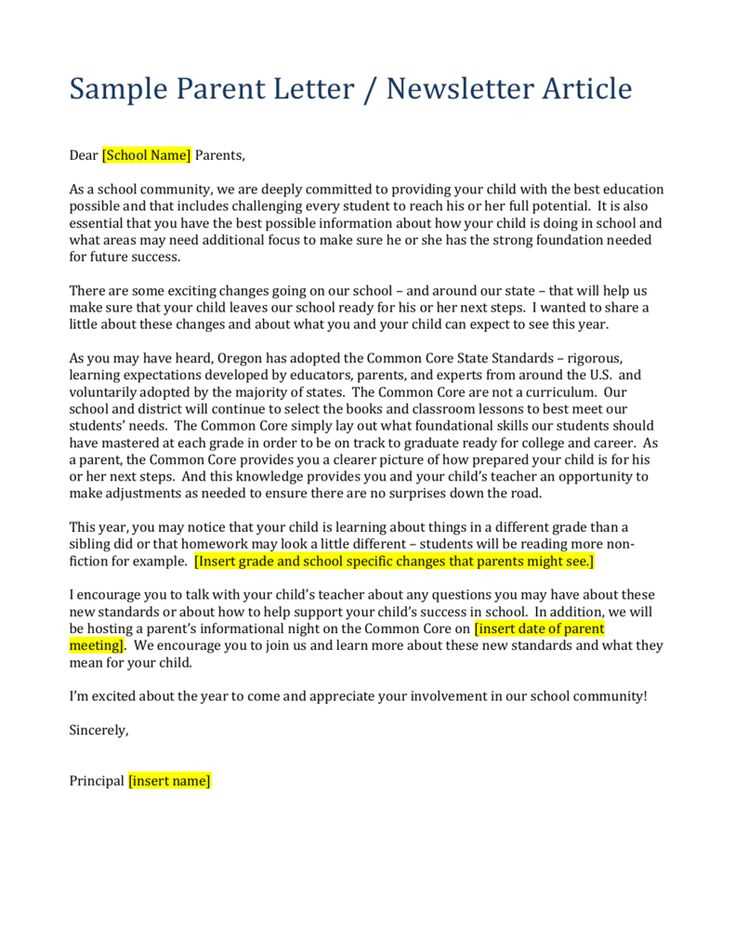
Encourage parents to take immediate action by being specific about what you need from them. Offer clear instructions on how they can respond or get involved. Use friendly and direct language to guide them through the next steps.
Request Feedback or Confirmation
Politely ask parents to confirm receipt of the letter or share any concerns. This can be done through a short response or an acknowledgment of the information provided. Make it easy for them to respond via email, phone, or a form.
Set a Deadline for Action
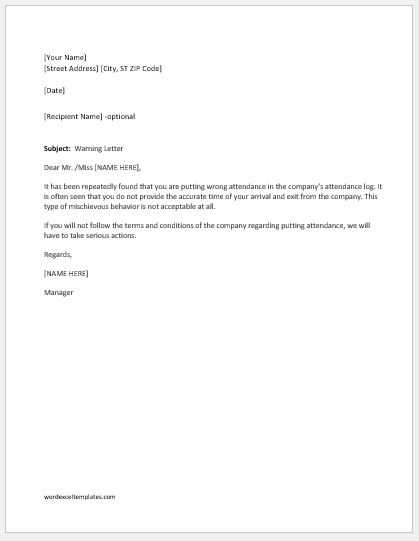
Provide a deadline for any required actions. Whether it’s attending a meeting, providing documentation, or responding to a survey, give parents enough time to comply, but make sure the deadline is clear and reasonable.
Finish with a friendly reminder that their involvement is highly valued and plays a significant role in their child’s success. This keeps the tone positive and encourages parents to act promptly.